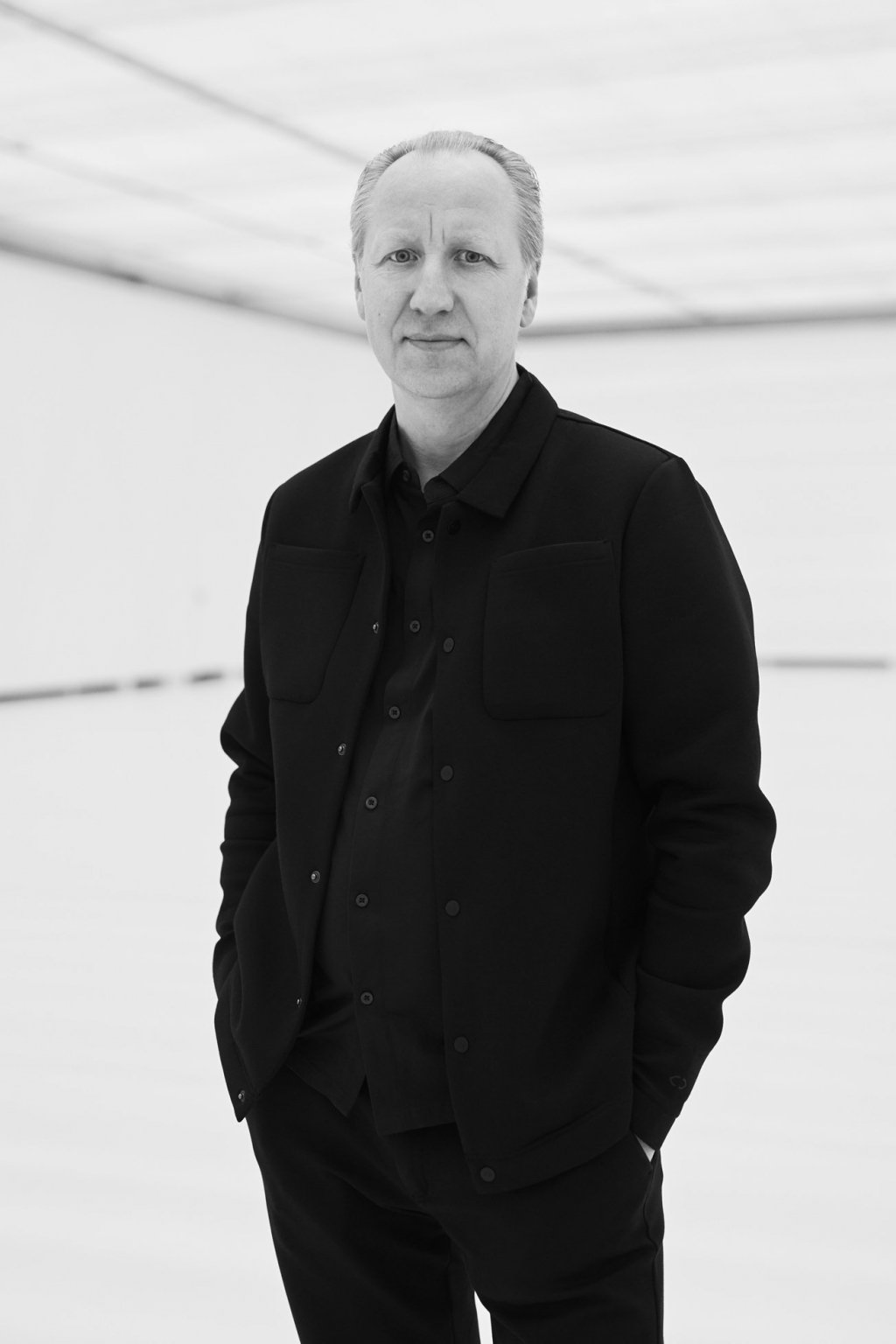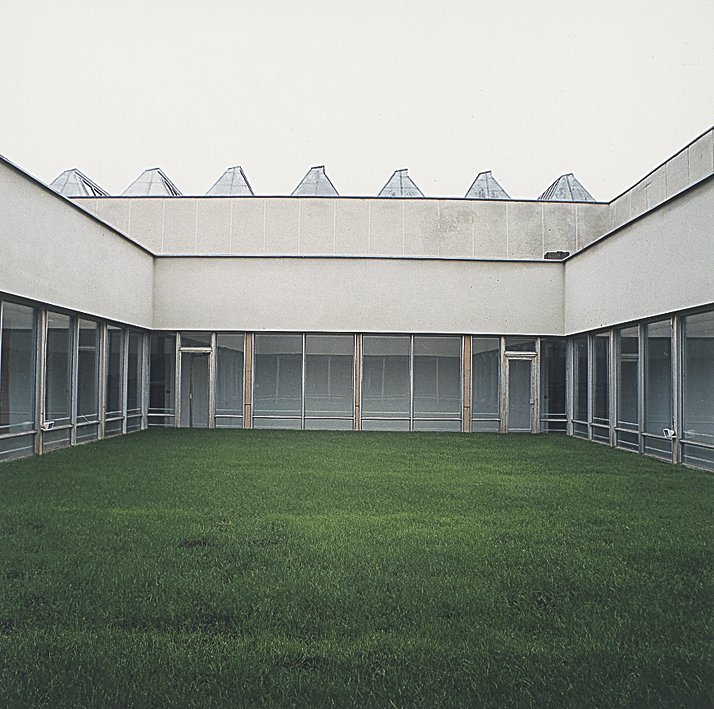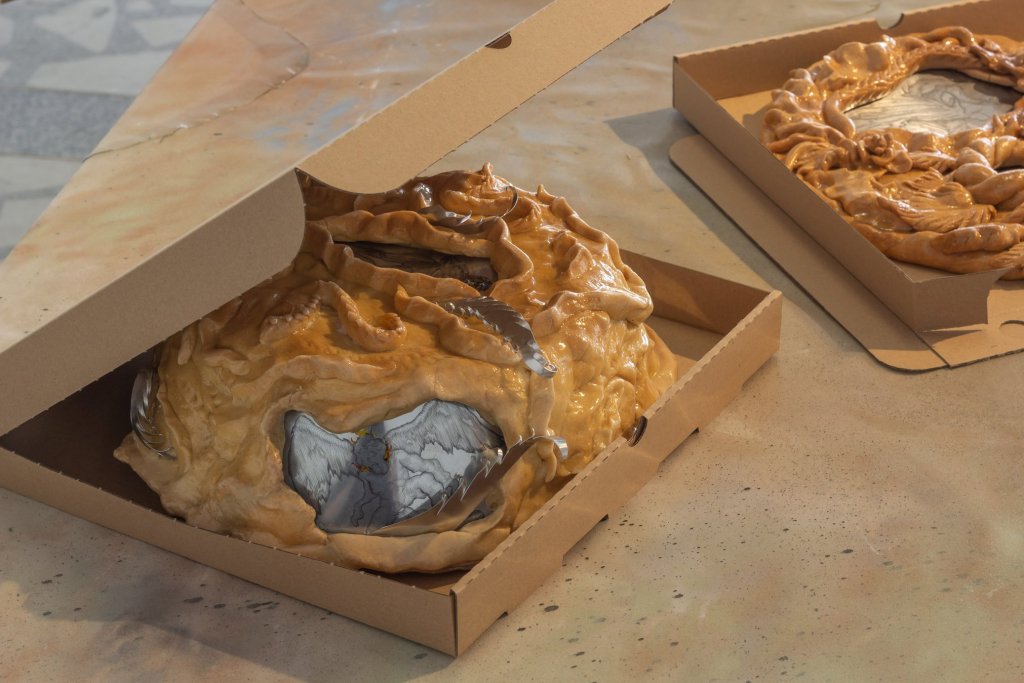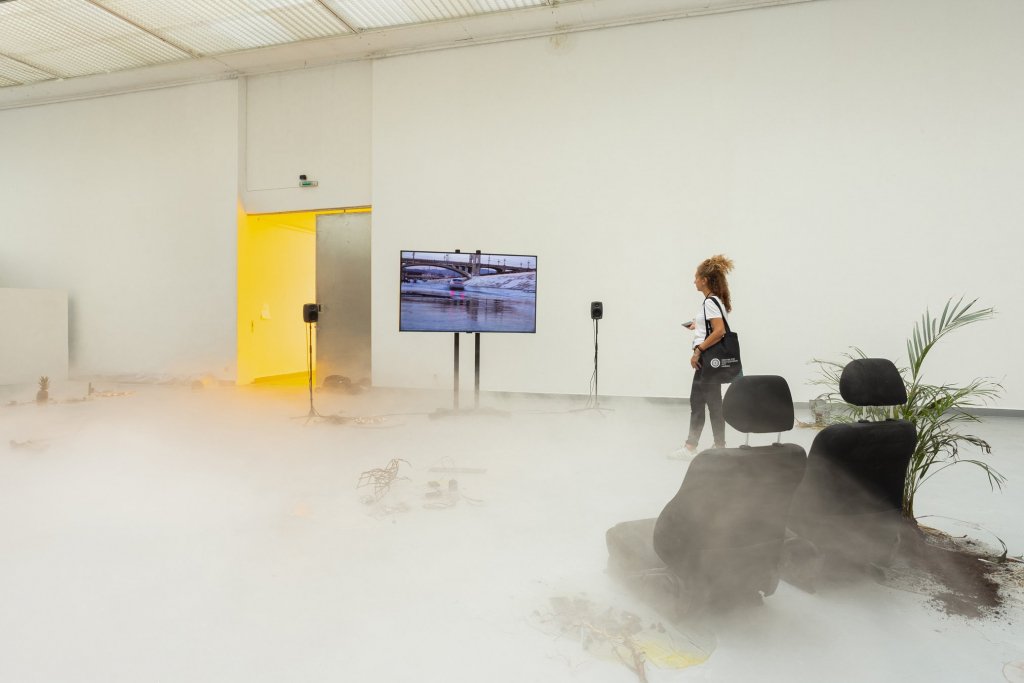Vilnius CAC: an interview with the director Kestutis Kuizinas
From palace of culture to contemporary art centre, from Soviet art festival to Baltic Triennial: an interview with CAC director Kestutis Kuizinas
The Contemporary Art Centre (CAC) in Vilnius is one of the largest institutions in the Baltic region. Its foundation in 1992 resulted in the transformation of the potpourri-style Soviet “palace of culture” into the harbinger of the new ideas in the contemporary culture of independent Lithuania. We spoke with Kęstutis Kuizinas, the Centre’s founding director, whose curatorial vision has been paramount for shaping the institution for almost three decades.
[For more interviews with museum directors, check our recent conversations with Sofía Hernández Chong Cuy (Kunstinstituut Melly) and Bart van der Heide (Museion). Ed.]

Kęstutis Kuizinas assumed the post of the director of the Contemporary Art Centre practically from the university bench. He was responsible as both artistic director and as a curator (1998) for internationalizing the Soviet-era Baltic Triennial and growing it into one of Central and Eastern Europe’s most prominent contemporary art festivals. Under his leadership, the institution has become known for its spirit of experimentation, dynamic architectural displays and multimedia projects.

How did the art scene in Lithuania look like after the collapse of the Soviet Union and what prompted the establishment of the CAC in the 1990s? How did the public react to a new institution and presentation of contemporary art?
Kęstutis Kuizinas: I remember those days as being very intense. Almost every single day in 1990-1991 was marked by breaking news on TV, radio, and newspapers about the Red Army leaving the country, high inflation, introduction of the temporary monetary unit, economic blockade from Russia and later, news about sudden outburst of crime, KGB agents among us and so on. In other words, things happening around you seemed to be (and obviously they were) more important and exciting than what you were witnessing in the exhibition halls. The art of that time, directly linked to what was going on in the society, was flooded by a chaotic and almost anarchistic usage of various patriotic, religious, exoteric symbols and signs. Weird topics and superficial metaphors dominated. As far as I remember those big overview exhibitions at the Vilnius Palace of Art Exhibitions looked almost identical, like a never-ending bad art fair. If there was any good artwork involved, it was doomed to disappear in the sea of rather low-key and hobbyist artistic production.
In the year 1991 I was only 23 and I was still an art history student int the Vilnius Art Academy. Nevertheless, I was already active as an art critic publishing my first reviews in the local periodicals. People who were in power realized that essential renewal of the art functioning system was needed and therefore, most probably, I got those phone calls encouraging me to take part in the competition for the director’s position to run the largest art centre in the country.

Kestutis Kuizinas: The beginning of my career was relatively easy because in fact nobody knew, including myself, what to expect. But after the first year of programing the Vilnius Palace of Art Exhibitions (which was renamed in June 1992 to CAC) there was an enormous campaign against the newly established institution. The message was simple and straightforward: we don’t need this anymore as it shows only “avant-garde.” CAC was an alien body within the local culture as it did not recognize the real art and respect the “traditional values.” On the other hand, CAC became a truly favourite meeting point for people of younger generations and its program was immediately supported by foreign embassies and cultural institutes. In the end of 1992, George Soros philanthropies has started their activities in Lithuania, which came in hand to go on promoting the new art forms.
Did you approach the establishment of the institution with a curatorial vision? How has it changed over time?
Kestutis Kuizinas: I was lucky to have the chance to travel quite early, being supported by embassies and various cultural centres like the Goethe Institute or the British Council. After visiting similar scale art institutions in Europe and the USA I could see, compare, and learn things. After my trip to Berlin in 1992, the first thing I did was to write a short, half page letter to the minister of culture asking to change the name of institution into CAC, as it was difficult for me being abroad to explain what kind of enterprise that “Art Palace” was, for which I was responsible back home. In fact it was a time when old names were easily disappearing. The former “palace”, its physical shelter with greyish, rough texture indoor building walls, a highly decorative floor with slabs of marble, was about to be transformed into a neutral white cube space. It was all about reaching certain standards that would allow us to operate like normal art institution.

We started to invite artists rather than rely on open calls and reviewing the applications, which was the common way of programing before the transformation. For this, of course, you needed a team of professionals. The first curators to work in the house were the art critics or artists like Deimantas Narkevičius or Kristina Inčiuraitė. Later, I was invited to teach an Arts Management course at the Vilnius Art Academy, and this was a good chance to invite younger art historians to join me at CAC, among them Raimundas Malašauskas and Jonas Valatkevičius. Besides the selected artists from older generation (mostly those who were unofficial leaders in the early nineties, not those who got the awards during the Soviet time, but those who were truly admired by other artists and art history students like me), we started to show young art. We also helped the artists with production of their work. There were no intermediary stages for building up an artistic career—like small galleries or artists run spaces. Some of our first young art shows were composed almost straight from the Vilnius Art Academy studios. How has the curatorial vision changed over time? In the beginning of the 90s, we simply tried to reach certain standards of presentation. A bit later (I would say in the mid 90s), we realized that it did not make sense to follow or copy other Western institution, despite how good we felt they were. In this regard, we have been privileged to have even more freedom in our choices and doings, as the government did not interfere much in our path of identity-building. That was the period when the CAC became known as a platform for experimentation through architecture of exhibition displays, unusual exhibition formats, innovative communication campaigns. For example, I remember us organizing the ICA’s (Institute of Contemporary Art in London) side event during launch of Baltic Triennale in 2005. It was a cooking-related happening and artists were asked to bring an ingredient. I spoke to Jens Hoffmann, the ICA’s director of exhibitions back then, and he said “Kęstutis, in London we are not allowed to use knives in public institutions.” I said “Cooking event without knives? What is that?” In Lithuania at that time politicians did not support us, but neither they interfered in what we were doing—we were able to carry out our own plan, something that would not happen in London.

(curated by Valentinas Klimašauskas and João Laia), and Ugnius Gelguda.
The Baltic Triennial is maybe the most known project of the CAC. Instead of establishing a new festival, it was decided to transform the existing one. What was the logic and motivation in the continuation of the event and were any elements of the original festival preserved?
Kestutis Kuizinas: Originally, it was a young Baltic artists exhibition held in the Soviet Vilnius art exhibition “palace.” It was occasionally quite good, presenting ambitious new work by the youngest generation. It had a particularly good reputation. I remember myself writing one of the first critical reviews about it while a was still a student. It made sense to me and the team to continue and redefine the tradition rather than establishing a new Vilnius triennial. At the end of the 90s, as we were preparing the 1998 edition of the Baltic Triennial, we realized it was not correct to have your major international art festival devoted solely to and branded as “young artist” exhibition. It was then that we dropped “young” from the title. The only element that survived in this regard is that we still invite relatively young curators and offer them a platform to experiment with the big scale exhibition format.

(curated by Valentinas Klimašauskas and João Laia), and Ugnius Gelguda.
The curatorial introduction of the 14th edition of the Baltic Triennial states that the event “for the first time since it was established in 1979… focuses on the geopolitical territory of Central and Eastern Europe and includes historical as well as contemporary artistic practices.” Apart from the expansion of geographical scope, the curators will look at the art of the region retrospectively for the first time. Can you explain a bit more about this curatorial idea? Is there indeed an urgency today to go beyond the contemporary in general?
Kestutis Kuizinas: First of all, I am really happy to hear from the curatorial team of the 14th Baltic Triennial (Valentinas Klimašauskas and João Laia) about their idea to focus on that region, which, I believe, after the fall of the iron curtain has been underrepresented. As you know, after the seminal 1990 break, most of the Eastern European countries started to look more to the West than to the East.

It was understandable. Because after 50 years of forced cooperation everybody felt fed up and wanted to forge new relationships with other countries and broaden new horizons. The second reason for under-cooperation was economical: a lack of money and infrastructure to support such collaboration between the former East countries. It was easier to get support to bring artists from Berlin or Amsterdam rather than from Prague or Bucharest. The chosen historical works in the triennial look therefore very fresh and interesting to see in the context of contemporary art.
Baltic solidarity in political and cultural terms is a known feature of the region. How often and in which format do you collaborate with the neighbouring institutions in Latvia and Estonia?
Kestutis Kuizinas: We are neighbours. We know each other better than anyone else. The main difference between let’s say Vilnius and Riga, or Tallinn and Vilnius, or Prague and any other Eastern or Central European country is that you can always pick up the phone and call instead of writing an email. People simply know each other better. There are many various cooperation projects going on, but nothing obligatory like in the old times. We meet in Venice or Basel, we share invites to reception parties of national pavilions and so on. All in all, it is a bit like the Nordic or Scandinavian regional cooperation, except that the labour force exchange is slower and just starting. Baltic cooperation is also encouraged by the Baltic Culture Fund, which financially promotes the collaboration between three Baltic countries. As an example, the reader and catalogue of the 14th Baltic Triennial got essential support from it not only for its realisation, but also for the dissemination outside of the Baltic region. Regarding the institutions with which we collaborate the most, I would say that besides the ex-Soros philanthropy network—i.e. CCA’s Latvia and Estonia—we deal with the art institutions that are closer to us in their profile, like kim? In Riga or the Tallinn Art Hall. Beyond that, the partnership is well-developed with the Kumu Art Museum and the Latvian National Museum of Art.

(curated by Valentinas Klimašauskas and João Laia), and Ugnius Gelguda.
What is your vision for the future of the CAC? What kind of projects and exhibitions would you like to organise?
Kestutis Kuizinas:Our current premises, the CAC building in the old town of Vilnius, is more than 50 years old. It is technically rather outdated and therefore soon it will be closed for a long-awaited major renovation. A few years ago, we were offered by the Ministry of Culture to take over an additional building into our possession with the proposal that we work on the concept of a new art centre there. It is the beautiful 17th century Sapiega Palace. Basically, while our current premises are being refurbished for the next period of their history, we will develop a new institution devoted to various type of arts and education.
The CAC therefore is only half of our future now. The Centre already has a strong identity, while the other place will be developed anew to be presented to the public. It is quite a challenge for me and the CAC team to create a new large institution. So, the story kind of begins again.
August 31, 2021
